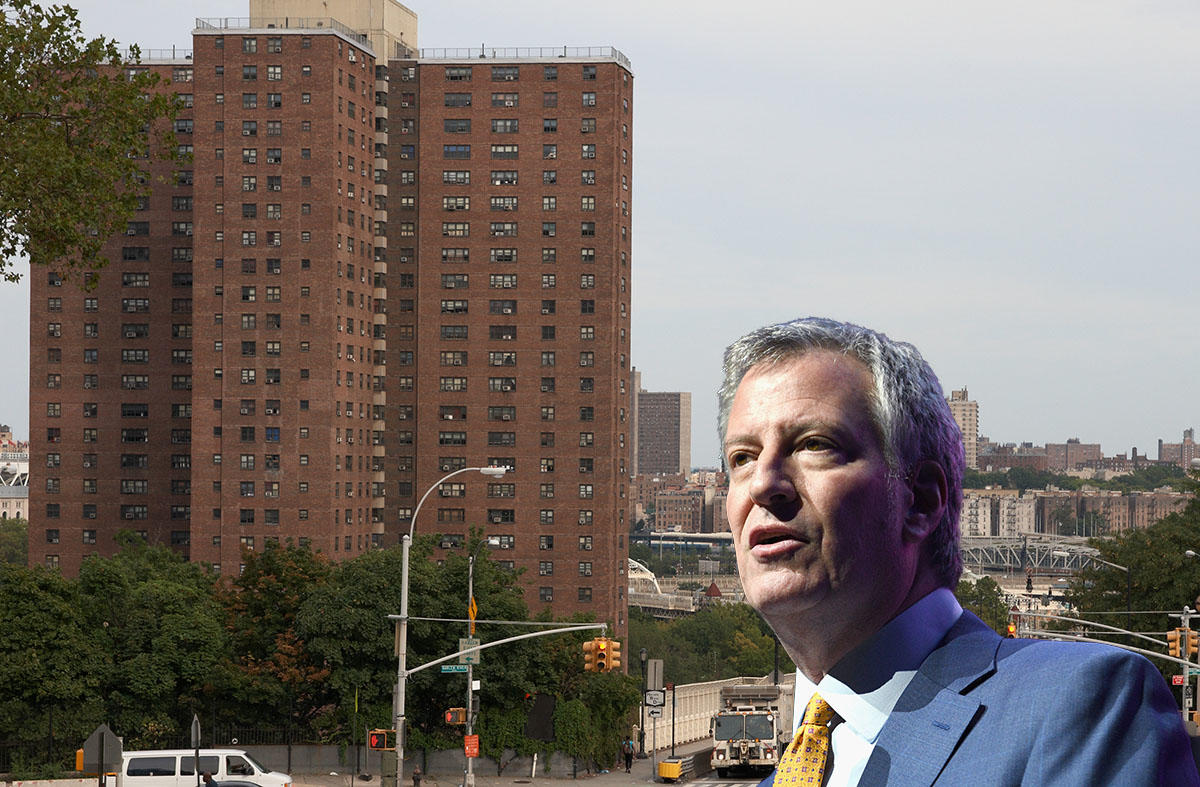Public housing officials didn’t just lie about toxic lead paint exposure — they also “systematically deceived” federal inspectors to hide widespread mold, rodent infestations, defective elevators and leaks at city apartment buildings, according to a federal complaint filed on Monday.
In an 80-page complaint, United States Attorney for the Southern District of New York Geoffrey Berman accuses the New York City Housing Authority of knowingly covering up poor conditions at various public housing developments. The city has agreed to pay more than $2 billion to settle the allegations, and NYCHA will be overseen by a federal monitor for at least five years. In a statement, Mayor Bill de Blasio said the agreement marked a turning point for a “decades-old pattern of mismanagement, divestment and neglect.”
“Decades of divestment by the federal and state governments and decades of neglect by New York City government have pushed our public housing system to the brink,” the mayor said. “I didn’t run for mayor to continue that history. I ran to help turn it around.”
During a press conference on Monday, the mayor said fixing NYCHA would be his “sacred mission.”
“When I saw the federal complaint, it made me angry as all hell,” he said. “It disgusted me.”
The complaint states that ex-NYCHA chair Shola Olatoye lied three separate times about the agency’s lead paint program. She resigned in April, after the city Department of Investigation revealed that she’d knowingly falsified federal reports about inspections for lead paint that never actually occurred. The complaint also alleges that though NYCHA reported 19 lead-poisoning cases among children between 2010 to 2016, “many hundreds of additional children” living in NYCHA apartments might be at risk.
For a decade, NYCHA encouraged employees to cheat annual inspections conducted by the U.S. Department of Housing and Urban Development — known as Public Housing Assessment System (PHAS), according to the complaint. A list of “Quick Fix Tips” provided to staff suggested ways to avoid attention from inspectors, like using painted cardboard to cover up stained or damaged ceiling tiles. NYCHA staff even distributed “dossiers” on individual HUD inspectors, detailing what issues each tended to focus on and for which they deducted the most points.
In many cases, according to the complaint, management would simply scramble to temporarily conceal the issue until the inspector left. They would shut off the building’s water supply to hide leaks during inspections, former NYCHA directors from Brooklyn and Queens told investigators. Managers would sometimes stuff newspaper and cork in holes in the walls, then paint over the material, according to the complaint. Instead of repairing a broken door, officials would allegedly remove the door and nail plywood over the doorframe.
Pest infestations “exploded” after NYCHA stopped doing routine exterminations in its buildings in 2012, according to the complaint. According to NYCHA, between 2013 and 2016, the agency received 60,000 work orders for roaches, more than 90,000 mice-related work orders and nearly 36,000 rat work orders. NYCHA exterminators sometimes sprayed water instead of pesticides when supplies were low, or closed out work orders by saying the tenants weren’t home, even though they never actually checked.
NYCHA also allegedly sent teams of elevator mechanics to “stay one step ahead” of PHAS inspectors. A maintenance worker who was employed by NYCHA through 2016 told federal authorities that in some cases, a maintenance worker would be given a single electric panel to cover place in an elevator before an inspection. After it was seen by the inspector, the worker would move it to the next elevator for the duration of the inspection. In 2016, NYCHA saw an average of more than 13 outages per elevator.
There was great incentive to fudge inspections: A higher score on PHAS would allow projects to skip up to two years of inspections.
“More broadly, NYCHA creates a culture in which staff feel compelled to obtain high PHAS scores, no matter the cost,” the complaint states. “Managers and staff know that they are expected to address or cover up problems before the PHAS inspector arrives.”
Under a new consent decree signed by the city, NYCHA will be overseen by a federal monitor for at least five years. The city has also promised to pay $1 billion over the first four years on top of what it’s already pledged to NYCHA, as well as $200 million annually for each of the following years over the 10-year term.
During Monday’s press conference, de Blasio also called on the state to authorize NYCHA to use the design-build construction method, which he said can shave a year off construction timelines. While the mayor acknowledged that fixing NYCHA falls to his administration, he pointed to decades of lack of funding from the state and federal government and inaction from previous administrations as major contributing factors to the state of the agency. When asked by a reporter to respond to comments from Gov. Andrew Cuomo — who said lack of funding wasn’t to blame for NYCHA’s woes — the mayor shot back.
“Wrong, wrong, wrong” he said. “The governor has spent very little time looking at the details of NYCHA.”
